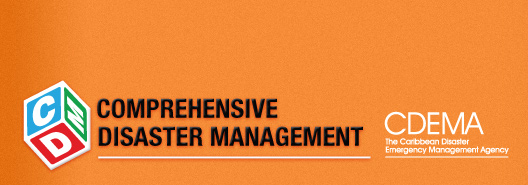
| Floods & Droughts |
|
Definitions Flood All floods are not alike. In fact, floods can be classified into three types:
Flash floods develop quickly, sometimes in just a few minutes and without any visible signs of rain. Flash floods are a sudden, large wall of water that carries rocks, mud, and other debris and sweeps away almost anything in its path.
When water can no longer be removed or stored by the river, flooding occurs. Periodic floods occur naturally on many rivers, forming an area known as the flood plain.
Coastal flooding occurs when offshore low-pressure systems, like hurricanes, push ocean water ashore – this water is called a storm surge. Droughts As weather patterns change, it makes it possible for droughts to happen. They’re particularly destructive in the Caribbean since so many of our economies depend on the money we get from exporting crops. Issues Floods – Soil Erosion and Storm Surges Floods are among the most common, frequent and serious hazards among all disasters in the Caribbean.Flood waters can destroy infrastructure (houses, roads etc.), especially those close to ground level. You can expect considerable water damage to anything in the path of flood waters. Many persons may be killed especially when flash floods occur, but the injuries are usually few. The food and water supply may become an issue even long after the flood has passed. Drinking water stored in dams and underground could become contaminated and the necessary purification process could take a while – this would lead to water shortages. Floods also destroy crops and livestock, meaning that there will be a shortage in the country’s food supply. There is also the outbreak of diseases to consider. For example, leptospirosis and cholera, both of which are caused by bacteria are the results of unclean surroundings. Droughts Obviously, the drought will impact the agriculture industry. In order to save his crops, the farmer may have to spend money on new irrigation plans. Since he’s now paying more money to provide the crops, he will have to charge more for the produce to make a profit. As a result, the public will have to pay more for food. Some foods will also become “scarce”— meaning the cost of goods will rise. There will also need to be water outages in order to preserve water. Sometimes, public places like schools, offices and restaurants will have to close when they don’t have water, which can affect the country’s productivity. During droughts, there may also be an increase in the number of forest fires or bush fires because of the dry conditions. There are some other issues which result from droughts:
History Floods September 2004 Where? Gonaives, Haiti Aftermath? Some 3000 people were killed from flood waters caused by the passing of Tropical Storm 2. When? December 2004 – January 2005 Where? Guyana Aftermath? It was reported in February 2005 that 290,000 residents (nearly 40% of Guyana’s There was also the concern about water borne bacterial diseases, such as Droughts 2009-2010 Where? Jamaica Aftermath Considered the worst drought in twenty-five years, in 2009 there wasn’t enough rainfall to As a result, there were as supply restrictions to communities in order to ensure that the |
|
Looking for:
|











